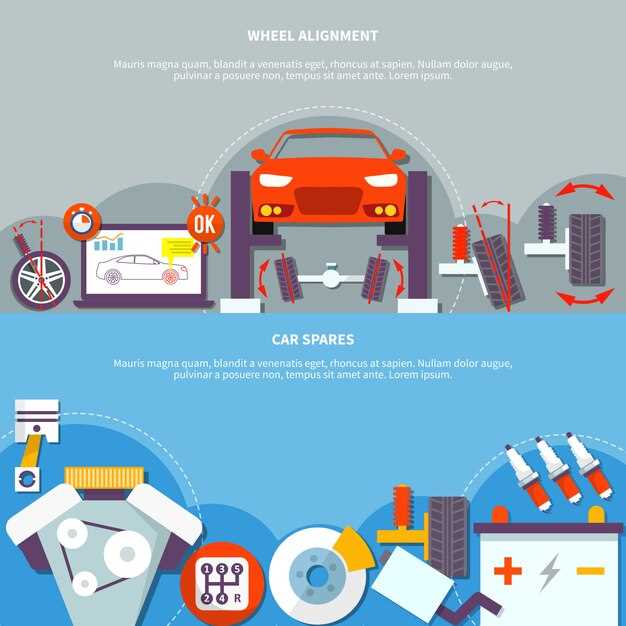
High-performance braking systems are essential for achieving optimal stopping power, especially in high-speed scenarios. These systems utilize advanced carbon materials to enhance performance, durability, and overall effectiveness. The integration of technology in brakes has led to significant improvements, allowing vehicles to respond more swiftly and efficiently during critical maneuvers.
The use of carbon fiber in brake components contributes not only to weight reduction but also to superior heat dissipation. This aspect is crucial, as excessive heat can lead to brake fade–a dangerous condition that undermines braking performance. By employing innovative brake tech, manufacturers ensure that high-performance vehicles can maintain consistent performance under demanding conditions.
As we delve into the intricacies of these systems, it becomes clear that understanding their mechanics and materials is vital for enthusiasts and professionals alike. By exploring the latest advancements in brake technology, we can appreciate the engineering marvels that allow drivers to maximize their control and safety on the road.
How Carbon Discs Enhance Performance in Racing Environments
In the competitive realm of racing, every component of a vehicle plays a crucial role in maximizing performance. Among these components, carbon brake discs have emerged as a pivotal tech advancement that significantly enhances braking efficiency and overall vehicle handling.
Carbon discs are designed to withstand extreme temperatures generated during high-speed racing. Unlike traditional metal rotors, carbon discs can maintain their structural integrity and performance even under the most intense braking scenarios. This resilience leads to a consistent and reliable braking feel, which is essential for drivers pushing their vehicles to the limit.
One of the primary advantages of carbon brake technology is its lightweight nature. Lighter components contribute to reduced overall vehicle mass, allowing for improved acceleration and agility. The lower rotating mass also enhances the vehicle’s responsiveness, enabling drivers to make quicker maneuvers on the track. This weight-saving advantage is particularly beneficial in racing environments where every fraction of a second counts.
Carbon brake discs also demonstrate superior heat dissipation properties. Efficient heat management reduces the risk of brake fade, a phenomenon where brakes lose effectiveness due to overheating. In racing conditions, where repeated hard braking is standard, the ability of carbon discs to handle heat enhances safety and performance, giving teams the confidence to push harder without the fear of brake failure.
Additionally, carbon discs offer enhanced modulation capabilities. The predictable response characteristics of carbon brakes allow drivers to apply precise braking inputs, facilitating smoother cornering and acceleration transitions. This level of control is paramount in achieving competitive lap times and maintaining the car’s balance throughout various racing scenarios.
Lastly, the durability of carbon brake systems contributes to longer lifespan compared to their metal counterparts. Reduced wear means fewer replacements and lower maintenance costs over time, providing teams with consistent performance through the race season.
In conclusion, the integration of carbon brake discs into racing vehicles represents a significant technological advancement. Their lightweight construction, heat management capabilities, reliable modulation, and durability make them a superior choice for enhancing performance in racing environments. As teams continue to seek a competitive edge, carbon brake systems are proving to be an essential element in achieving optimal performance on the track.
Comparative Analysis of Brake Materials: Carbon vs. Traditional Steel

When evaluating high-performance braking systems, material choice plays a crucial role in determining the effectiveness and longevity of brake components. Two popular materials used in the manufacturing of brake discs are carbon and traditional steel. Each material has its distinct characteristics that influence performance under different driving conditions.
Carbon brake discs offer several advantages over traditional steel. They are significantly lighter, which contributes to improved overall vehicle dynamics and handling. The reduced weight of carbon discs results in less unsprung mass, allowing for enhanced suspension responsiveness. Additionally, carbon provides superior thermal management, dissipating heat more effectively during intense braking scenarios. This property reduces the risk of brake fade, maintaining consistent performance even during prolonged use.
On the other hand, traditional steel discs are known for their durability and cost-effectiveness. Steel discs typically have a longer lifespan under normal driving conditions and are less susceptible to thermal damage. They are also easier to manufacture and replace, making them a more economical choice for everyday vehicles. However, in extreme performance situations, steel’s ability to manage heat can lead to brake fade if not properly ventilated or maintained.
The friction characteristics of each material also differ substantially. Carbon discs generally produce a more stable friction coefficient, resulting in predictable braking behavior. This stability is crucial in high-performance applications where precision is essential. Conversely, while traditional steel can provide adequate stopping power, its friction performance can vary depending on the operating conditions and temperature.
In summary, the choice between carbon and traditional steel brake discs depends heavily on the intended use of the vehicle. For high-performance applications, carbon discs are often the preferred choice due to their lightweight construction, superior heat dissipation, and consistent braking performance. Conversely, for everyday vehicles, traditional steel discs may be more practical due to their durability, cost, and reliability in standard driving conditions. Understanding these differences is critical for optimizing braking performance and ensuring a safe driving experience.
Maintenance Tips for High-Performance Brake Systems: Maximizing Lifespan

Maintaining high-performance brake systems is essential for both safety and optimal performance. Regular inspections can prevent issues that might otherwise lead to costly repairs or decreased braking efficiency. One of the first steps in maintenance is to regularly check the brake discs. Look for signs of wear, such as grooves or uneven surfaces, and replace them if necessary to ensure maximum contact and effective braking power.
Another crucial aspect is monitoring the brake pads. High-performance pads often experience rapid wear, especially under aggressive driving conditions. Replacing worn pads promptly will not only enhance braking performance but also protect the discs from damage caused by metal-on-metal contact.
Proper cleaning of the brake components is vital. Brake dust can accumulate and affect performance. Using brake cleaning solutions can help remove debris and ensure that the brake surfaces remain smooth, allowing for better heat dissipation and overall performance.
It’s also important to regularly inspect the brake fluid levels. Old or contaminated fluid can lead to a spongy brake feel and can affect the hydraulic system’s response. Changing the brake fluid based on the manufacturer’s recommendations will help maintain optimal hydraulic pressure and responsiveness.
High-performance braking systems often benefit from heat management strategies. Heat can degrade the performance of brake components. Consider investing in performance brake cooling solutions like ducts or upgraded calipers designed to handle elevated temperatures.
Finally, if you frequently engage in motorsports or spirited driving, consider using high-quality aftermarket parts specifically designed for high performance. These components tend to offer better durability and thermal resistance compared to standard options, thus extending the lifespan of your brake system.












